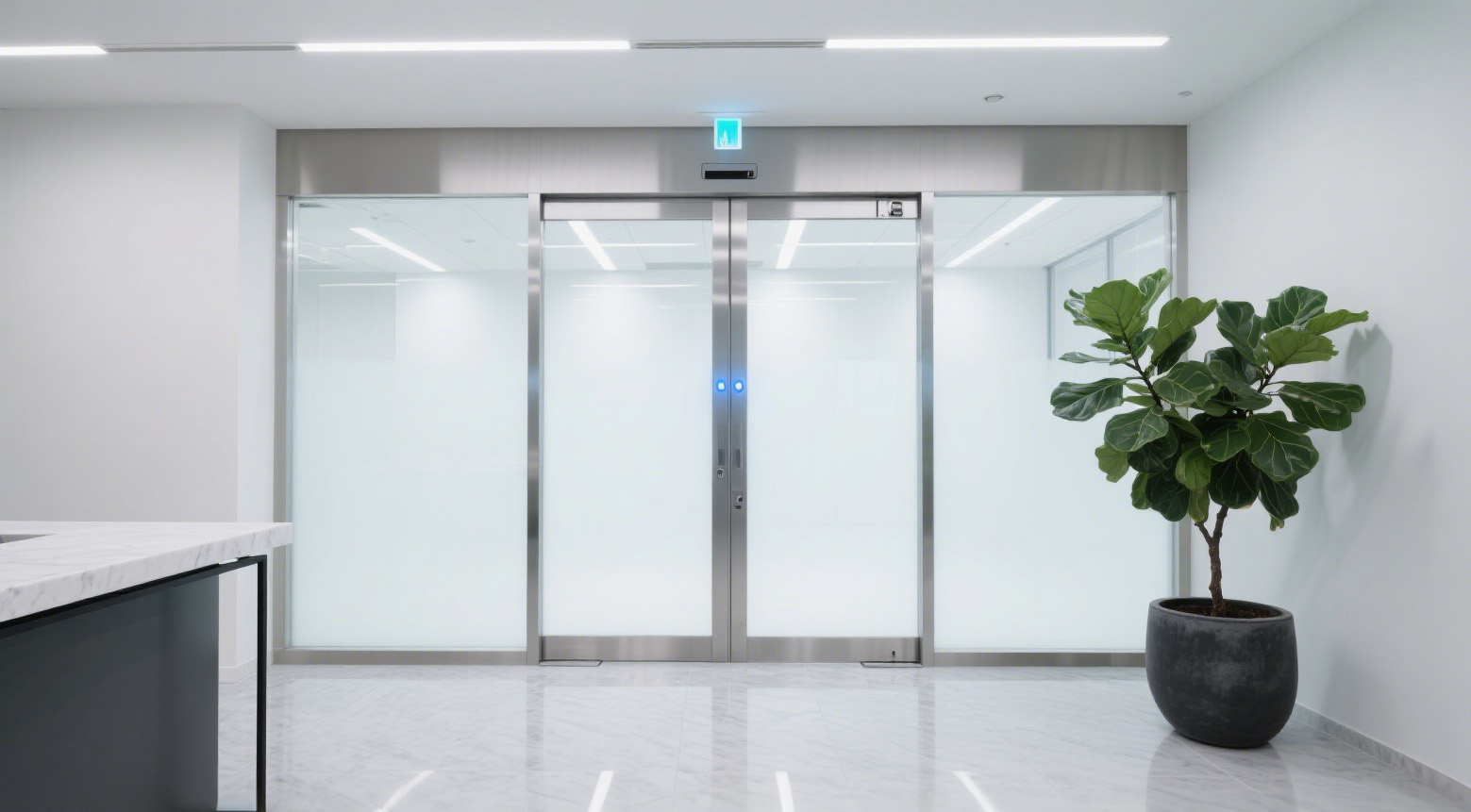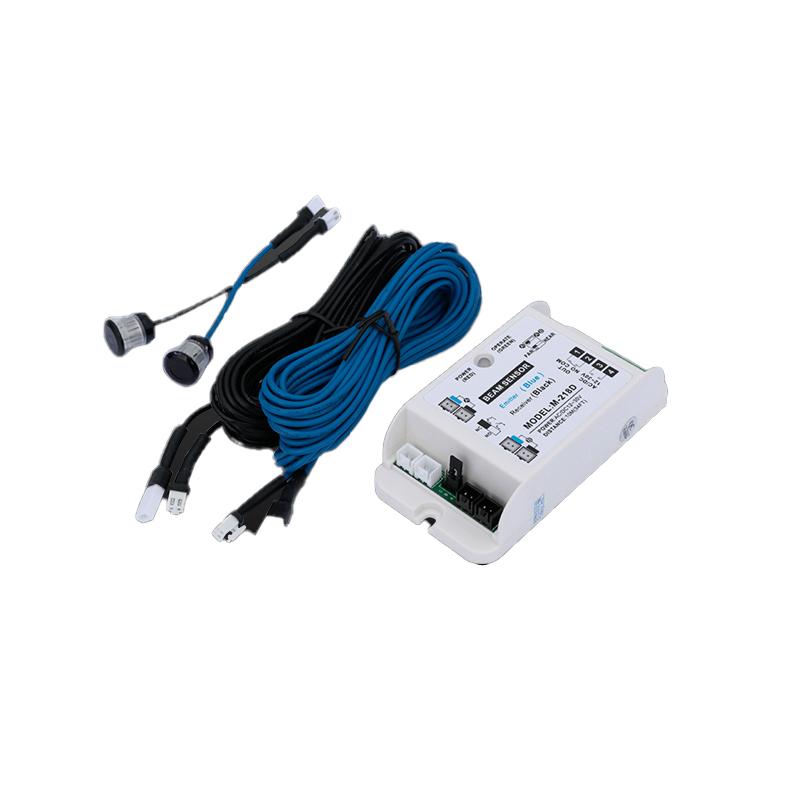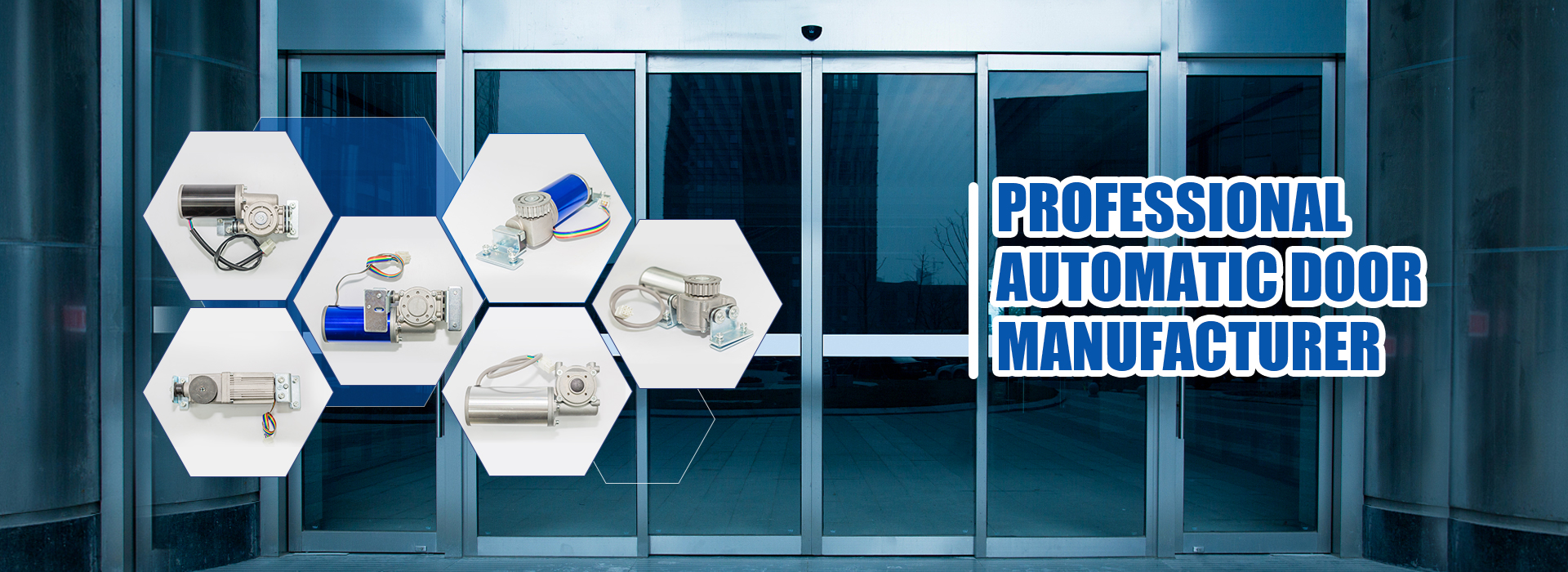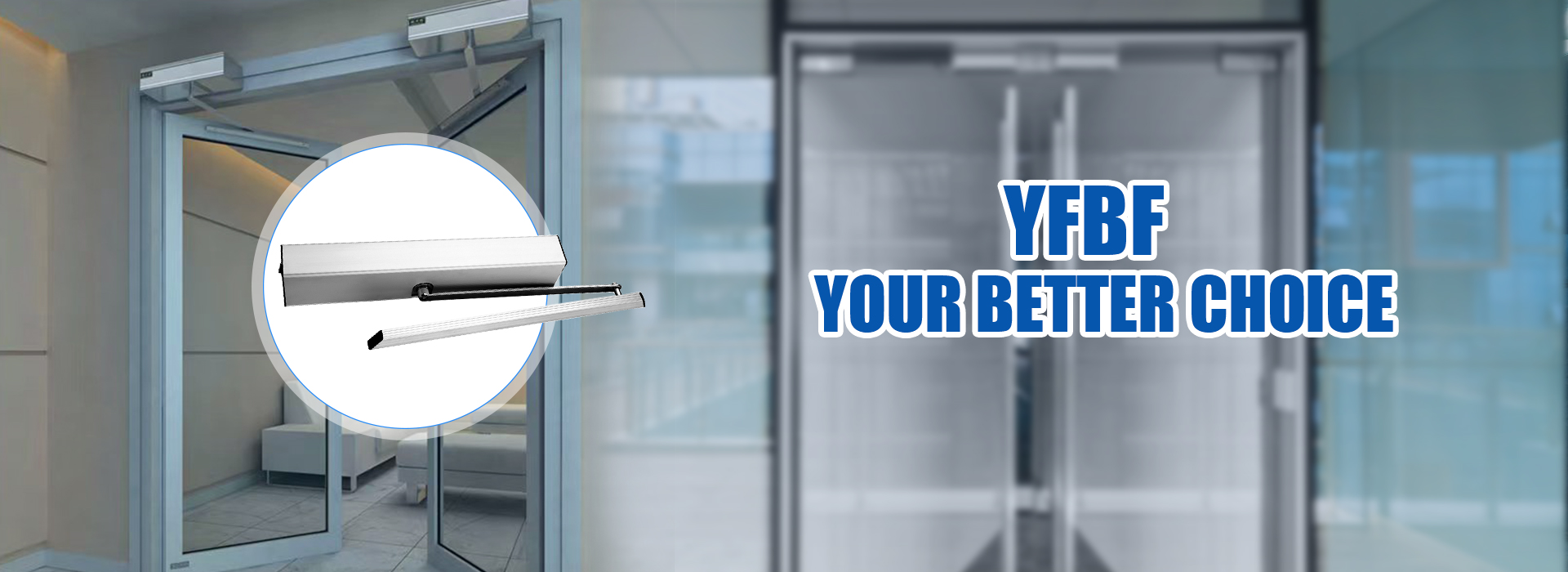
Automatic doors love to show off their high-tech side, but nothing beats the superhero work of a Safety Beam Sensor. When someone or something steps into the doorway, the sensor acts fast to keep everyone safe.
- Offices, airports, hospitals, and even homes use these sensors every day.
- North America, Europe, and East Asia see the most action, thanks to strict rules and a passion for smart technology.
- Shoppers, travelers, and even pets benefit from this quiet guardian.
Key Takeaways
- Safety beam sensors use invisible infrared beams to detect people or objects and stop or reverse automatic doors quickly, preventing accidents.
- Regular maintenance like cleaning lenses, checking alignment, and testing the sensor ensures doors stay safe and work smoothly every day.
- These sensors protect children, pets, and equipment by catching even small obstacles and meeting safety rules that require doors to reverse when blocked.
How Safety Beam Sensors Work
What Is a Safety Beam Sensor?
Imagine a tiny superhero standing guard at every automatic door. That’s the Safety Beam Sensor. This clever device keeps a watchful eye on the doorway, making sure nothing gets squished or trapped. It uses a team of parts that work together like a well-rehearsed band:
- Transmitter (the sender): Shoots out an invisible infrared beam across the doorway.
- Receiver (the catcher): Waits on the other side, ready to catch the beam.
- Controller (the brain): Decides what to do if the beam gets blocked.
- Power supply: Feeds energy to the whole system.
- Mounting frames and color-coded wires: Hold everything in place and make setup a breeze.
When someone or something steps into the path, the Safety Beam Sensor jumps into action. The beam breaks, the receiver notices, and the controller tells the door to stop or reverse. No drama, just smooth safety.
How Safety Beam Sensors Detect Obstacles
The magic starts with a simple trick. The transmitter and receiver sit across from each other, usually at waist height. Here’s how the show unfolds:
- The transmitter sends a steady beam of invisible infrared light to the receiver.
- The receiver keeps its eyes peeled, waiting for that beam.
- The system checks nonstop to make sure the beam stays unbroken.
- A person, a pet, or even a rolling suitcase interrupts the beam.
- The controller gets the message and tells the door to freeze or back up.
Tip: Most sensors react in less than 100 milliseconds—faster than a blink! That quick response keeps everyone safe, even in busy places like airports or malls.
Some doors use extra sensors, like microwave or photoelectric types, for even more protection. These sensors can spot movement, bounce signals off objects, and make sure nothing sneaks through unnoticed. The Safety Beam Sensor always stands ready, making sure the coast is clear before the door moves.
Technology Behind Safety Beam Sensors
Safety Beam Sensors pack a lot of science into a small package. The best ones, like the M-218D, use microcomputer control technology for super-stable performance. They come with international optical lens designs, which focus the beam and keep the detection angle just right. German-made filters and smart amplifiers block out sunlight and other distractions, so the sensor only reacts to real obstacles.
Here’s a quick look at what makes these sensors tick:
| Feature | Specification |
|---|---|
| Detection Range | Up to 180 inches (~4.57 meters) |
| Response Time | ≤ 40 milliseconds |
| Technology | Active Infrared |
| Mounting Height | Minimum 12 inches above ground |
| Alignment Tolerance | 8° |
Some sensors use dual beams for extra safety. One beam sits low to catch pets or small objects, while the other stands tall for adults. The sensors can handle a wide range of power supplies and work in all kinds of weather. With color-coded wiring and plug-in sockets, installation becomes a snap. The Safety Beam Sensor doesn’t just keep doors safe—it does it with style and smarts.
Safety Benefits and Accident Prevention
Preventing Doors from Closing on People or Objects
Automatic doors can act like gentle giants, but without a Safety Beam Sensor, they might forget their manners. These sensors stand guard, making sure doors never close on someone’s foot, a rolling suitcase, or even a curious pet. When the invisible beam gets interrupted, the sensor sends a signal faster than a superhero’s reflexes. The door stops or reverses, keeping everyone safe.
- Several real-life incidents show what happens when safety sensors fail or get disabled:
- Injuries have occurred when automatic doors closed on people because the sensors were not working.
- Disabling a sensor once led to a door hitting a pedestrian, causing legal trouble for the building owner.
- Children have been hurt when stores tampered with their cross-threshold sensors.
- Doors that move too quickly, without proper sensor checks, have caused accidents.
Note: Industry experts say daily inspections keep sensors working right. Modern scanning sensors, like the Safety Beam Sensor, have replaced old floor mats, making doors much safer for everyone.
Garage doors use a similar trick. If the beam gets broken by a person, pet, or object, the door’s brain tells it to stop or back up. This simple move saves people from bumps, bruises, and worse.
Reversing Door Movement for Added Safety
The real magic happens when the door doesn’t just stop—it reverses! The Safety Beam Sensor acts like a referee, calling a timeout when someone steps into the danger zone. Here’s how the action unfolds:
- Photoelectric sensors sit on both sides of the door, just above the ground.
- The transmitter sends out an invisible beam to the receiver.
- The system watches the beam like a hawk.
- If anything interrupts the beam, the sensor sends a signal.
- The door’s control system stops the door and then reverses it, moving away from the obstacle.
This reversing trick isn’t just a fancy feature. Safety standards like ANSI/UL 325 require doors to reverse if they sense something in the way. The rules even say the door must reverse within two seconds if it hits an obstacle. Some doors add soft edges, vision panels, or warning beeps for extra protection.
Tip: Test the reversing feature by placing an object in the door’s path. If the door stops and backs up, the Safety Beam Sensor is doing its job!
Protecting Children, Pets, and Equipment
Kids and pets love to dart through doorways. The Safety Beam Sensor acts like a silent guardian, always watching for little feet or wagging tails. The sensor’s invisible beam sits just a few inches above the ground, perfect for catching even the smallest intruders.
- The sensor’s high sensitivity means it can spot:
- Children playing near the door
- Pets sneaking through at the last second
- Bikes, toys, or sports gear left in the way
- Other safety features work alongside the sensor:
- Pressure-sensitive edges stop and reverse the door if touched
- Audible beeps and flashing lights warn everyone nearby
- Childproof controls keep little hands from starting the door by accident
- Manual release levers let adults open the door in an emergency
Regular cleaning and alignment keep the sensor sharp. Monthly tests with a toy or ball in the doorway make sure the system works. Upgrading older doors with a Safety Beam Sensor gives families peace of mind and keeps everyone—kids, pets, and even expensive equipment—out of harm’s way.
Maintaining Safety Beam Sensor Performance

Importance of Regular Maintenance
A Safety Beam Sensor works best when it gets a little TLC. Regular maintenance keeps doors running smoothly and everyone safe. Here’s why maintenance matters:
- Daily safety checks help spot problems before they cause trouble.
- Cleaning the sensor’s “eyes” keeps them sharp and accurate.
- Following the manufacturer’s manual ensures safe operation.
- Trained staff can catch issues early and fix them fast.
- Professional servicing handles tricky diagnostics that need expert hands.
- Skipping maintenance leads to malfunctions and safety risks.
- Dust, dirt, and even wild weather can mess with sensor accuracy.
- Regular cleaning and calibration keep everything in top shape.
- Lubricating moving parts helps doors glide like skaters.
- Battery checks stop power failures from sneaking up.
A well-maintained sensor means fewer surprises and more peace of mind.
Common Issues and Troubleshooting
Even the best sensors face a few hiccups. Here are the most common issues and how to tackle them:
- Sensor Obstruction: Remove anything blocking the beam—even a shadow can cause trouble.
- Dirty Lenses: Wipe away dust or cobwebs with a soft cloth.
- Misalignment: Adjust sensors until indicator lights shine steady.
- Wiring Problems: Inspect for loose or frayed wires and fix them.
- Sunlight or Electronics: Shield sensors or tweak angles to avoid interference.
- Power Issues: Check for steady power and replace batteries if needed.
- Mechanical Failures: Keep hinges and rollers in good shape.
| Issue | Quick Fix |
|---|---|
| Misalignment | Realign sensors using indicator lights |
| Dirty Lenses | Clean gently with a microfiber cloth |
| Blocked Pathways | Clear debris or objects from sensor area |
| Wiring Problems | Tighten connections or call a technician |
Tips for Checking Safety Beam Sensor Function
Keeping sensors in top form doesn’t take a superhero. Try these simple checks:
- Stand a few feet from the door and watch it open—easy test!
- Place an object in the doorway; the door should stop or reverse.
- Clean lenses and check for smudges or dirt.
- Inspect for loose wires or cracked hardware.
- Listen for odd sounds during door movement.
- Test the auto-reverse feature every month.
- Schedule professional inspections for a thorough checkup.
Regular checks and quick fixes keep the Safety Beam Sensor ready for action, day after day.
Experts agree: automatic doors stay safe when their sensors get regular attention. Daily checks, quick cleaning, and smart repairs keep accidents away. Laws and building codes demand these safety features, so everyone—kids, pets, and grown-ups—can walk through with confidence. A little care goes a long way in keeping doors friendly.
FAQ
How often should someone clean a safety beam sensor?
Dust loves to party on sensor lenses. Clean them once a month with a soft cloth. Sparkling sensors mean doors stay smart and safe!
Can sunlight confuse a safety beam sensor?
Sunlight sometimes tries to play tricks. The M-218D uses a German-made filter to block out those rays. The sensor stays focused on real obstacles.
What happens if the sensor wiring gets mixed up?
- The M-218D flashes a fault alarm.
- Color-coded sockets help installers avoid mistakes.
- Quick fix: Check the wiring chart and reconnect the cables.
Post time: Jul-10-2025



